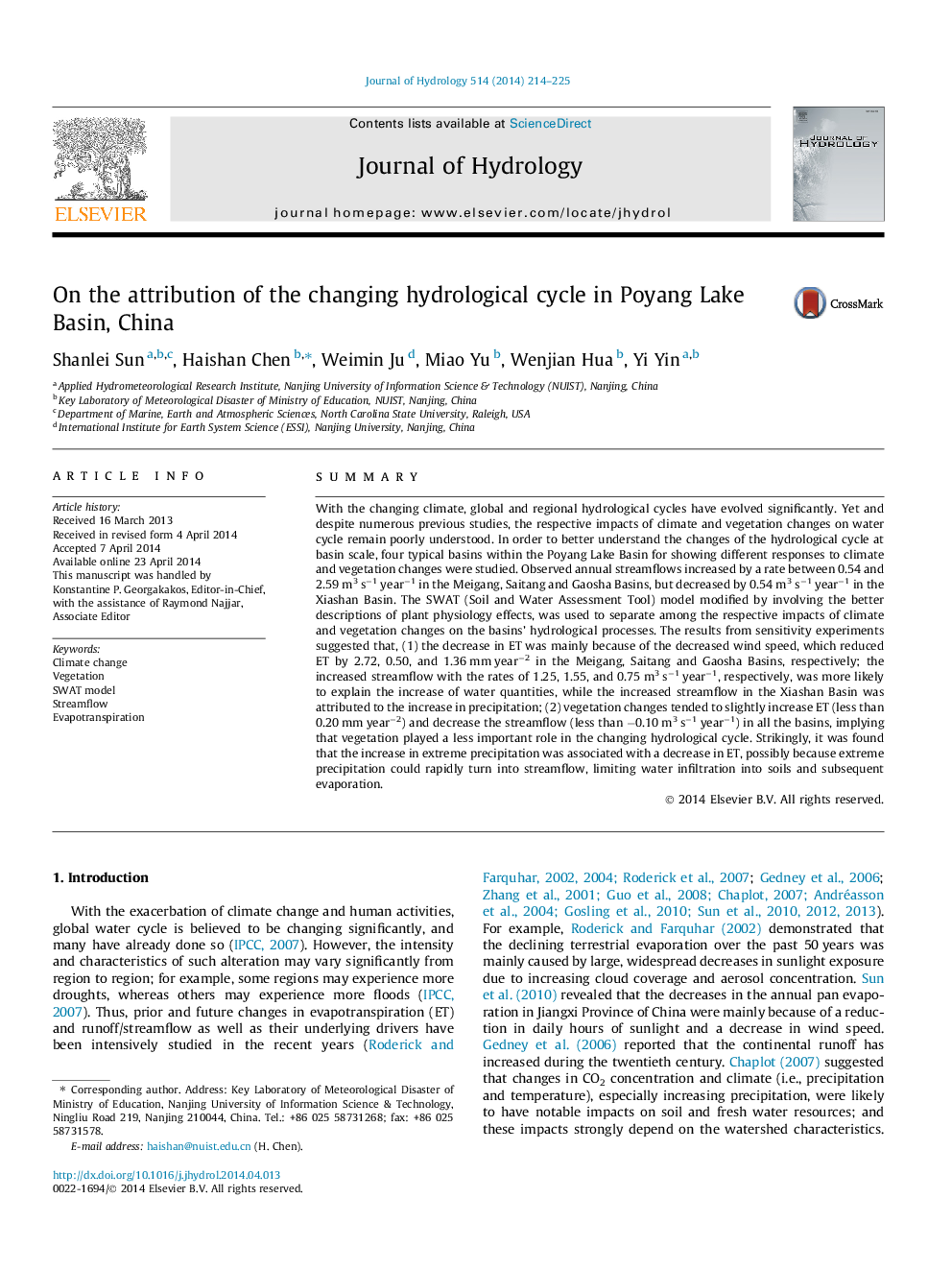| کد مقاله | کد نشریه | سال انتشار | مقاله انگلیسی | نسخه تمام متن |
|---|---|---|---|---|
| 4576016 | 1629934 | 2014 | 12 صفحه PDF | دانلود رایگان |

• Impacts of vegetation and climate changes on water cycle were quantified.
• Increases in extreme precipitation probably tended to decrease AET.
• Climate change played a crucial role on hydrological cycle than vegetation.
SummaryWith the changing climate, global and regional hydrological cycles have evolved significantly. Yet and despite numerous previous studies, the respective impacts of climate and vegetation changes on water cycle remain poorly understood. In order to better understand the changes of the hydrological cycle at basin scale, four typical basins within the Poyang Lake Basin for showing different responses to climate and vegetation changes were studied. Observed annual streamflows increased by a rate between 0.54 and 2.59 m3 s−1 year−1 in the Meigang, Saitang and Gaosha Basins, but decreased by 0.54 m3 s−1 year−1 in the Xiashan Basin. The SWAT (Soil and Water Assessment Tool) model modified by involving the better descriptions of plant physiology effects, was used to separate among the respective impacts of climate and vegetation changes on the basins’ hydrological processes. The results from sensitivity experiments suggested that, (1) the decrease in ET was mainly because of the decreased wind speed, which reduced ET by 2.72, 0.50, and 1.36 mm year−2 in the Meigang, Saitang and Gaosha Basins, respectively; the increased streamflow with the rates of 1.25, 1.55, and 0.75 m3 s−1 year−1, respectively, was more likely to explain the increase of water quantities, while the increased streamflow in the Xiashan Basin was attributed to the increase in precipitation; (2) vegetation changes tended to slightly increase ET (less than 0.20 mm year−2) and decrease the streamflow (less than −0.10 m3 s−1 year−1) in all the basins, implying that vegetation played a less important role in the changing hydrological cycle. Strikingly, it was found that the increase in extreme precipitation was associated with a decrease in ET, possibly because extreme precipitation could rapidly turn into streamflow, limiting water infiltration into soils and subsequent evaporation.
Journal: Journal of Hydrology - Volume 514, 6 June 2014, Pages 214–225